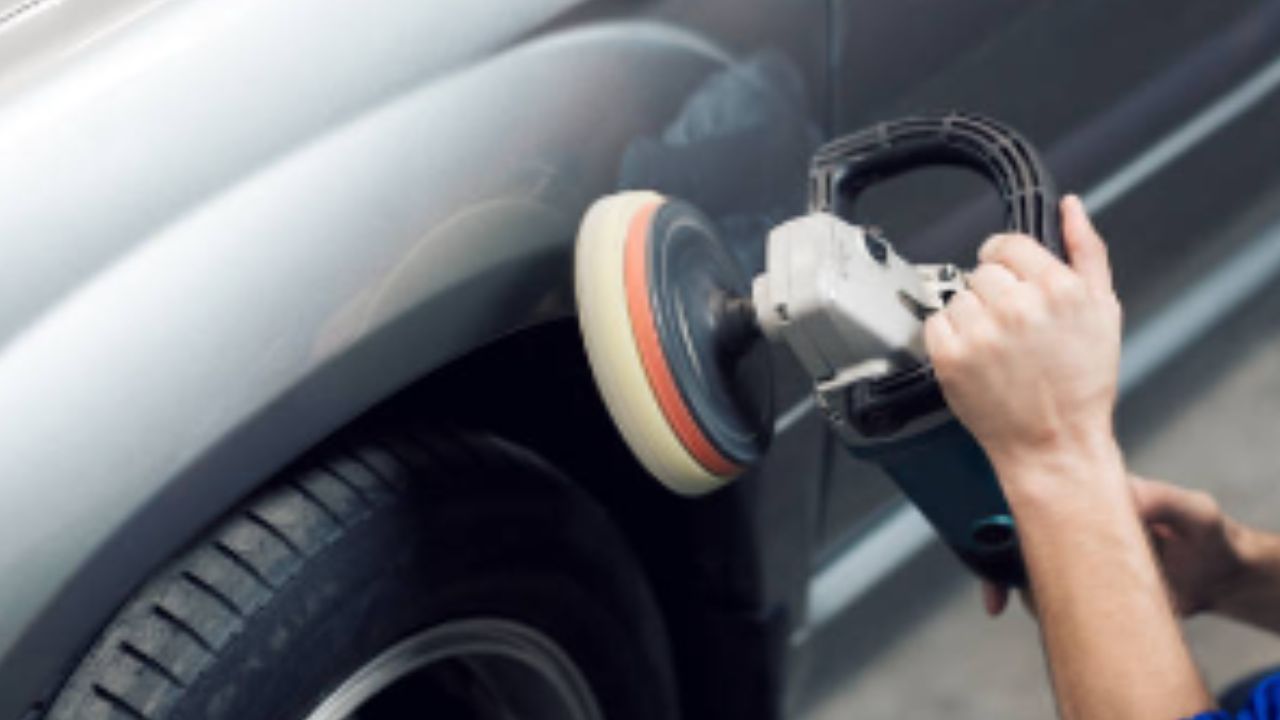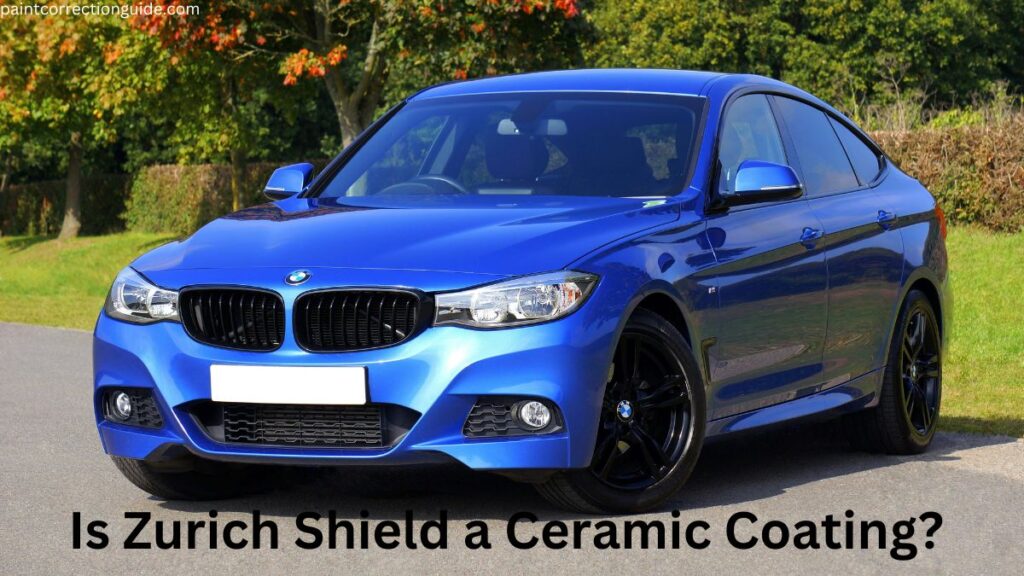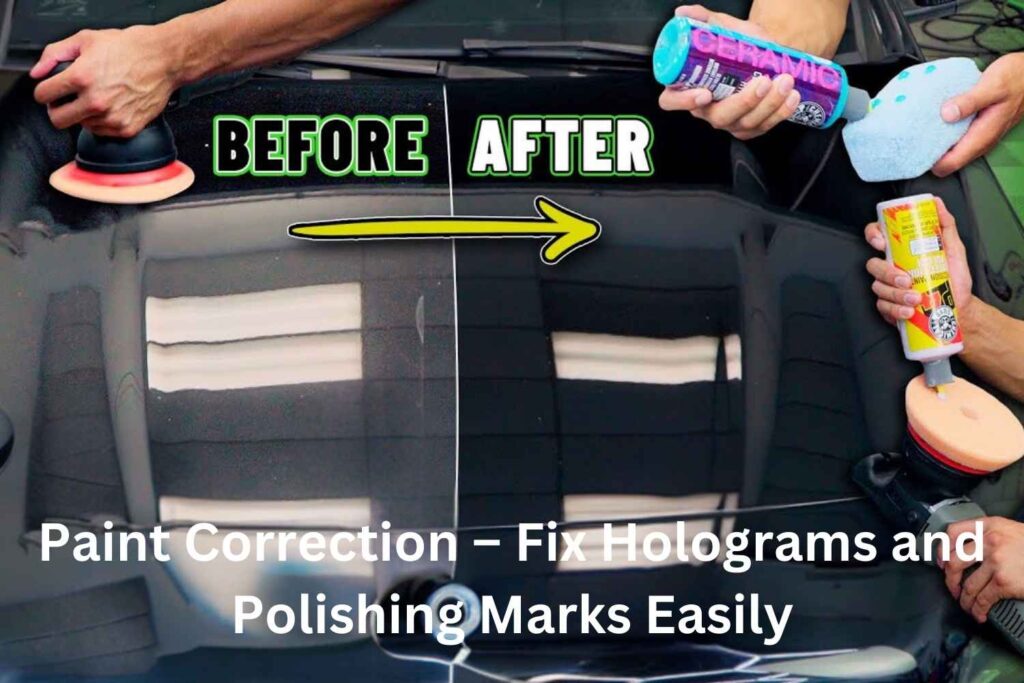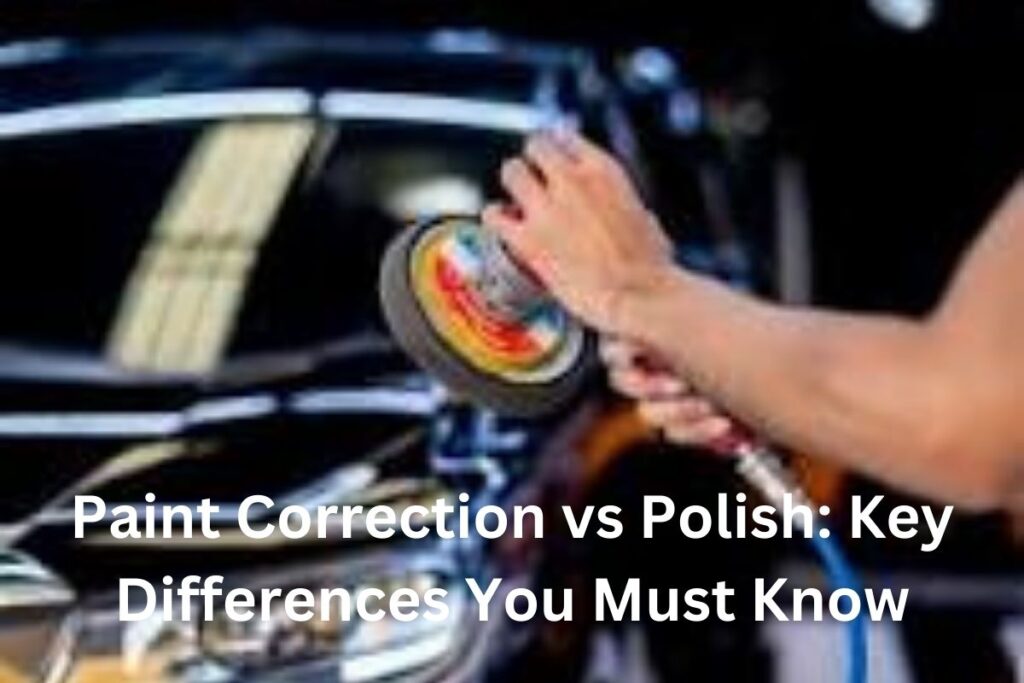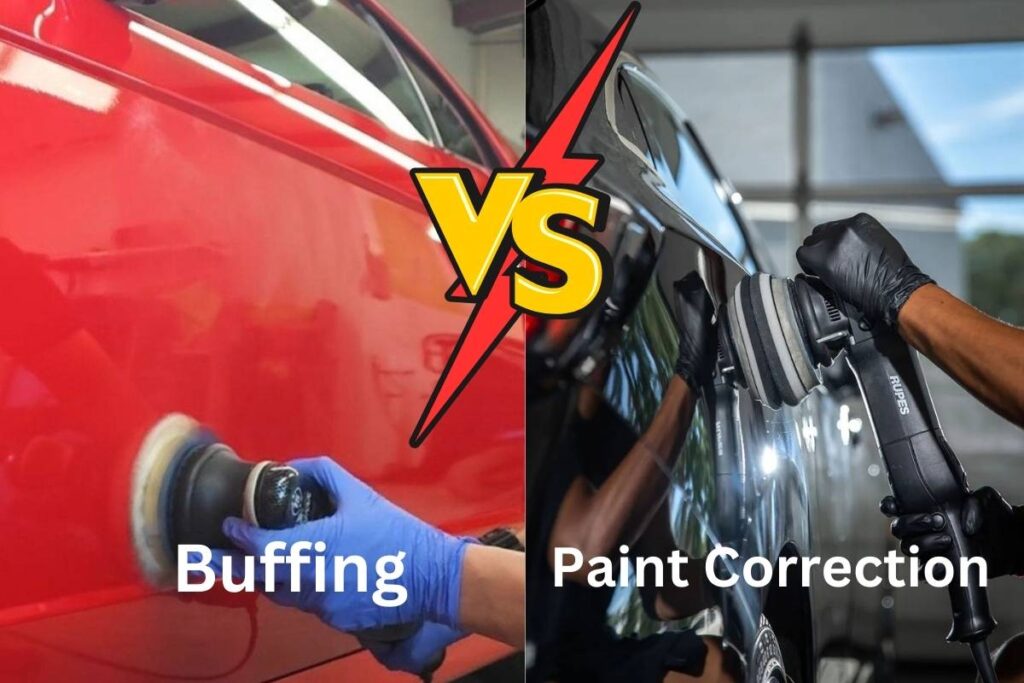This quote perfectly captures the essence of why waxing your car after polishing is so crucial. Polishing your car gives it a fresh, smooth finish by removing imperfections, but it also leaves the paint exposed and vulnerable. Without a protective layer, the shine you worked so hard to achieve can quickly fade under the harsh realities of the outside world—dirt, rain, UV rays, and even bird droppings can undo all your efforts.
Waxing is the armor your car needs. Just like a knight wouldn’t go into battle without protection, your car shouldn’t face the elements without a strong, protective wax layer. In this post, we’ll dive into exactly why waxing after polishing is essential, how soon you should do it, and which wax works best for your car. By the end, you’ll understand how to protect your car’s finish for the long haul, keeping it looking as shiny and sleek as ever.
Let’s dive into the details, and trust me, your car will thank you for it!
Table of Contents
ToggleThe Purpose of Waxing After Polishing
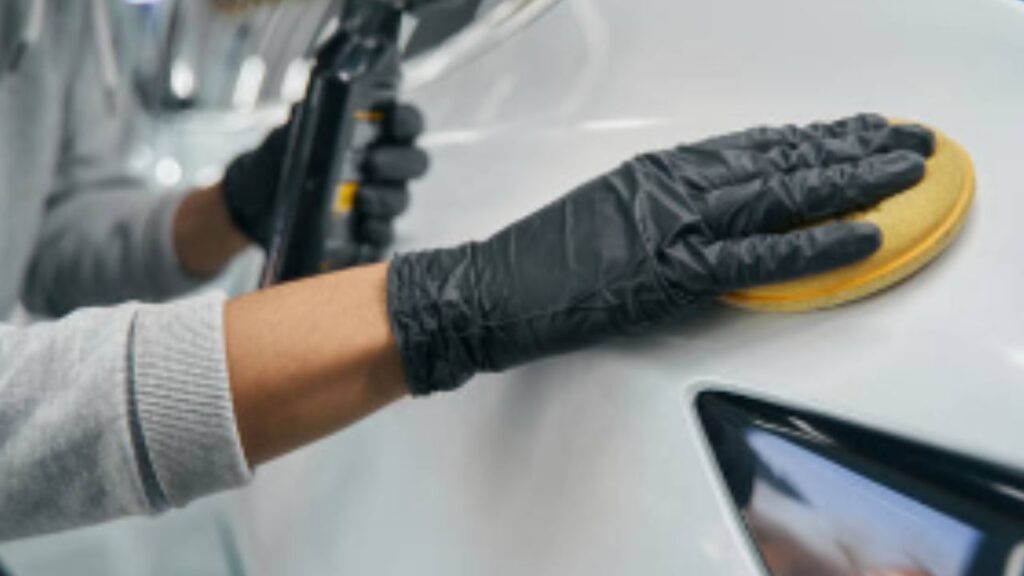
Okay, so let’s break this down in easy terms. Think of polishing like giving your car a deep clean. It removes all the dirt, scratches, and little imperfections from the paint. But once you polish, your car’s surface is naked—it’s vulnerable to getting dirty or scratched again. This is where waxing comes to the rescue.
Why is Waxing Important After Polishing?
Waxing is important because it seals the surface of your car. It acts like a protective layer. After polishing, the car’s paint is super smooth, but it’s also exposed to harmful stuff like UV rays, dirt, rain, and even bird poop. Wax adds a layer that helps to block all those things. Here’s a quick look at why waxing after polishing is crucial:
- Protection from Damage: Wax keeps your paint safe from the sun, rain, and other things that can ruin your car’s shine.
- Long-Lasting Shine: Polishing makes your car shiny, but without wax, that shine can fade fast. Waxing locks in the glossy look, making it last longer.
- Easy Cleaning: Wax creates a slick surface that makes it harder for dirt and water to stick. This means your car stays cleaner for longer.
- Prevents Fading: Without wax, the sun can cause your car’s paint to fade over time. Wax helps block harmful UV rays, so your car stays vibrant and colorful.
In short, waxing isn’t just about making your car look shiny—it’s about keeping it protected and looking good for months after you polish it.
Does Waxing Preserve the Polishing Work?
Absolutely! Waxing does more than just make your car look nice; it actually preserves the hard work you put into polishing. When you polish a car, you’re removing tiny imperfections, which gives the paint a new, smooth surface. But that smooth surface is also unprotected. Waxing seals the deal by adding a protective barrier, so all that work doesn’t go to waste.
Think of it this way: polishing is like cleaning your car, and waxing is like putting on a raincoat to keep it dry and shiny. They go hand in hand.
How Soon After Polishing Should You Wax a Car?
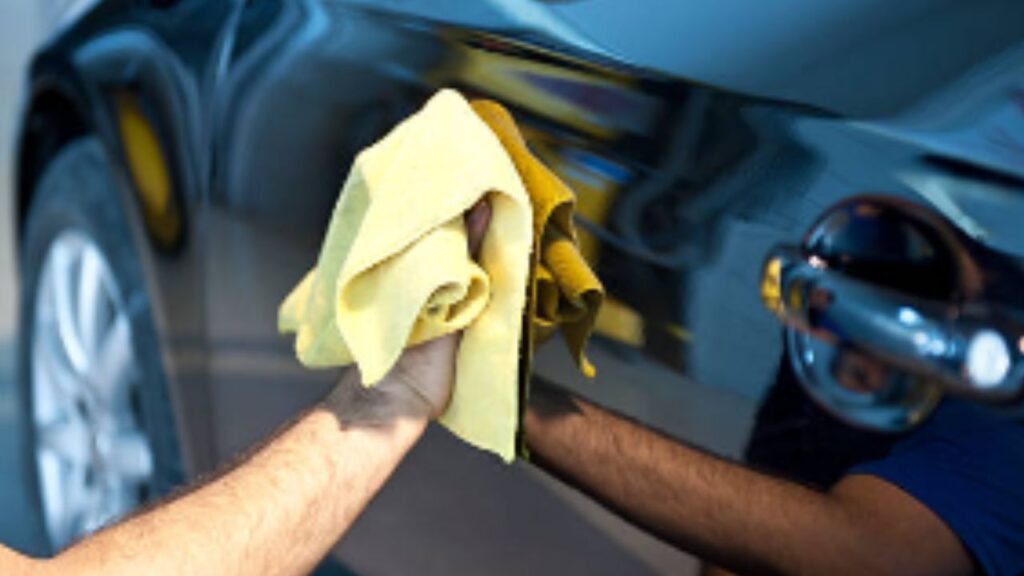
Now, you might be thinking, “Okay, I understand why I need to wax after polishing, but how soon should I do it?” Great question! The short answer is—you should wax as soon as possible after polishing. Let me explain why.
Why Wax Right Away?
When you polish your car, you’re actually removing a very thin layer of the paint, which makes the surface smooth and glossy. But here’s the catch—after polishing, the surface is unprotected. This means it’s more likely to get damaged by dirt, water, and even the sun’s UV rays. Waxing acts as a protective shield to prevent this from happening.
The longer you wait to apply wax, the more chances there are for dust or contaminants to settle on your freshly polished surface. So, the best practice is to apply the wax immediately after polishing to keep that surface clean and protected.
Is It Ever Too Soon to Wax?
Not really. As soon as you’re done polishing and the surface is clean, you can start waxing right away. In fact, most professional detailers wax a car immediately after polishing because the wax bonds better to a freshly polished surface. It’s like putting a lid on a jar—you want to seal in the freshness right away!
Common Misconception: Should I Wait Before Waxing?
Some people think they need to wait a few hours or even days after polishing before applying wax, but that’s a myth. In reality, waiting can actually make things worse. Dust and dirt could settle on your polished paint, and then you’d be trapping those particles under the wax. So, it’s better to apply the wax as soon as you can to get the best protection and gloss
What Happens if You Don’t Wax After Polishing?
Alright, let’s say you polish your car but decide not to wax it afterward. What happens? Well, the polish will give your car a nice shine, but it won’t last. Here’s why:
- No Protection: The polish doesn’t protect your car—it just smooths out the paint. Without wax, your paint is exposed to the elements like sun, rain, bird droppings, and dirt.
- Faster Fading: Without a protective layer of wax, the sun’s UV rays can break down the paint over time, causing it to fade much faster.
- Scratches and Water Spots: Wax helps repel water and dirt, so if you skip waxing, your car will be more prone to water spots and scratches from dirt.
In short, skipping wax after polishing is like cleaning your house and then leaving the windows open during a dust storm. All your hard work polishing will be undone pretty quickly.
How Often Should You Wax After Polishing?
A good rule of thumb is to wax your car every 2-3 months. This keeps the protective layer strong and ensures your car stays shiny and well-protected. Of course, this can vary depending on your environment. If you live in a place with harsh weather (like too much sun or heavy rain), you might want to wax a little more often to give your car extra protection.
Also, some waxes, like ceramic waxes, can last longer than traditional waxes, so you might not need to wax as frequently. I’ll talk more about the types of wax later, so you’ll know which one is best for your car.
Choosing the Right Type of Wax After Polishing
Now that you know why waxing is important after polishing and when to do it, the next question is—what kind of wax should you use? There are different types of wax, and each has its own pros and cons. Don’t worry, I’ll make it super simple for you to understand.
Types of Wax to Use After Polishing
- Paste Wax
- What it is: Paste wax is the old-school kind of wax that comes in a solid form. You scoop a bit out, rub it on an applicator pad, and apply it to the car.
- Pros: Paste waxes usually give the best, deepest shine, and they tend to last the longest. They also provide excellent protection from the elements like rain, UV rays, and dirt.
- Cons: Applying paste wax can take a bit more time and effort because you have to work it into the paint by hand. If you’re someone who likes to spend time pampering your car, this might not be a big deal.
- Best for: People who want long-lasting protection and don’t mind putting in some extra effort.
- Liquid Wax
- What it is: Liquid wax is thinner than paste wax and comes in a bottle. You pour a small amount onto a pad or directly onto the car and spread it out.
- Pros: Liquid wax is easier to apply than paste wax and can still offer great protection. It’s faster and a little less messy.
- Cons: Liquid wax may not last as long as paste wax, but the difference is usually minor. You might need to reapply it more often if you want long-lasting shine.
- Best for: People who want a balance between easy application and decent protection.
- Spray Wax
- What it is: Spray wax is the easiest type of wax to apply. You just spray it onto the car and wipe it off with a microfiber cloth. Super quick and simple!
- Pros: Spray wax is perfect if you’re in a hurry or just want to give your car a quick shine before heading out. It’s easy to apply and takes very little time.
- Cons: The downside is that spray wax doesn’t last as long as paste or liquid wax. It’s more of a quick fix than a long-term solution.
- Best for: People who want a fast, easy shine and don’t mind reapplying frequently.
- Ceramic Wax
- What it is: Ceramic wax is a newer type of wax that combines the benefits of traditional wax with the durability of ceramic coatings. It often comes in a liquid or spray form.
- Pros: Ceramic wax provides super long-lasting protection, often up to six months or more. It also has hydrophobic properties, meaning water beads up and rolls off easily, keeping your car cleaner for longer.
- Cons: It can be a bit pricier than regular wax, and while it lasts longer, it might not give the same warm shine that natural carnauba waxes do.
- Best for: People who want long-term protection and are willing to invest a little more for the convenience.
Which Wax is Best for You?
Now, you’re probably wondering, “Which wax should I choose?” Well, it depends on what you’re looking for:
- If you want the deepest shine and long-lasting protection, go for paste wax.
- If you prefer something that’s easier to apply but still offers good protection, then liquid wax is a great option.
- If you’re in a hurry and just want a quick touch-up, spray wax is perfect for you.
- And if you’re all about long-term durability and water-repelling magic, ceramic wax is your best bet.
How to Apply Wax Correctly
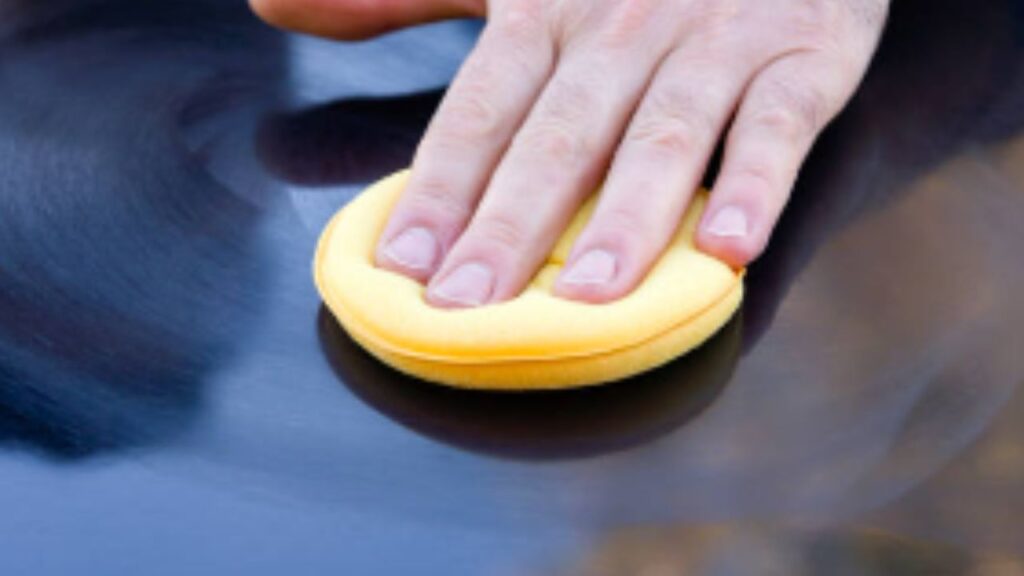
No matter which type of wax you choose, applying it correctly is key to getting the best results. Here’s a simple step-by-step guide:
- Prep the Surface: Before waxing, make sure your car is clean and dry. Waxing on a dirty surface will just trap dirt underneath, which could cause scratches.
- Apply in Sections: Don’t try to wax the entire car at once! Work in small sections—like one door at a time. This helps you focus on getting an even layer of wax across the surface.
- Use the Right Tool: Whether you’re using an applicator pad, microfiber cloth, or a machine buffer, make sure you’re using the right tool for your wax. For instance, paste wax works best with a foam applicator, while spray wax can be applied with a microfiber towel.
- Let It Haze: After applying the wax, wait a few minutes for it to dry and turn into a hazy layer. This usually takes 5 to 10 minutes, depending on the product.
- Buff It Off: Use a clean microfiber cloth to buff the wax off in circular motions. You’ll start to see that beautiful shine as you remove the wax!
Common Mistakes to Avoid When Waxing After Polishing
Now that we’ve talked about the types of wax and how to apply them, let’s go over some common mistakes people make when waxing after polishing. Avoiding these mistakes can help you get the best shine and protection for your car.
1. Applying Wax on a Dirty Surface
One of the biggest mistakes people make is waxing their car without cleaning it properly. If there’s any dust, dirt, or debris on the surface, waxing over it will seal those contaminants under the wax. This can lead to scratches and even swirl marks. Always make sure your car is clean and dry before you start waxing.
2. Using Too Much Wax
It’s easy to think that using more wax will give you better protection, but that’s not true. In fact, using too much wax can make it harder to buff off and can leave behind a streaky, uneven finish. The goal is to apply a thin, even layer of wax. A little goes a long way! Excess wax doesn’t improve protection, it just makes the job harder.
3. Waxing in Direct Sunlight
Waxing your car in direct sunlight can cause the wax to dry too quickly, making it harder to buff off and possibly leaving streaks behind. Always try to wax your car in a shaded area, like inside a garage or under a tree, so the wax dries properly and evenly.
4. Not Letting the Wax Dry Long Enough
After you apply the wax, you need to let it dry for a few minutes until it becomes hazy. If you don’t wait long enough, you’ll end up buffing off the wet wax, which means it won’t form a proper protective layer. Check the instructions on the wax bottle for the recommended drying time. Typically, you’ll need to wait around 5-10 minutes.
5. Applying Wax on Unpainted Surfaces
Another mistake is accidentally getting wax on areas like plastic trim, mirrors, or windows. Wax is designed for the painted surfaces of your car, and applying it on unpainted areas can leave behind a white, cloudy residue that’s tough to remove. If you do get wax on these areas, wipe it off quickly before it dries.
6. Not Buffing Properly
Buffing is just as important as applying the wax. Once the wax dries, you need to use a clean microfiber cloth to buff it off in circular motions. This removes the excess wax and brings out the shine. If you don’t buff thoroughly, you might end up with streaks or dull patches.
7. Waxing Too Frequently
Waxing is great for protecting your car, but you don’t need to do it every week! Over-waxing can lead to wax buildup, which makes your car look dull and can even attract more dirt. A good rule of thumb is to wax your car every 2-3 months or as needed, depending on the type of wax you’re using and the environment your car is exposed to.
8. Not Using the Right Tools
Using the wrong tools—like old towels or cheap sponges—can lead to scratches or uneven application. Make sure you’re using clean microfiber cloths and foam applicators specifically designed for waxing. These tools are soft and won’t harm your car’s paint.
By avoiding these mistakes, you can make sure your car’s wax job not only looks great but also lasts longer, giving you maximum protection.
Maintaining Your Car After Waxing
So, you’ve polished and waxed your car, and now it looks fantastic! But how do you keep it that way? Just like anything else, a little care and maintenance can go a long way. Here are some easy-to-follow tips on how to maintain your car’s shine and protection after waxing.
1. Regular Washing with the Right Products
After waxing, it’s important to wash your car regularly to remove dirt, dust, and other contaminants. But here’s the catch—you don’t want to use just any soap. Regular household soaps can be too harsh and strip away the wax, leaving your car unprotected. Instead, use a pH-balanced car wash soap that’s designed to be gentle on waxed surfaces.
Tip: Wash your car every 1-2 weeks to keep it clean and prevent contaminants from building up on the wax layer.
2. Use the Two-Bucket Method
When washing your car, try using the two-bucket method. This simple trick helps prevent scratches and swirl marks. Here’s how it works:
- Bucket 1: Fill this with soapy water for washing the car.
- Bucket 2: Fill this with plain water for rinsing your sponge or microfiber cloth.
By rinsing your sponge in the second bucket before dipping it back into the soapy water, you remove dirt and grime, reducing the chance of scratching your car’s waxed surface.
3. Avoid Harsh Scrubbing
Your wax layer is protecting your car, but it can still get damaged by harsh scrubbing or rough materials. Always use a soft microfiber cloth or a sponge specifically designed for car washing. Scrubbing too hard or using an abrasive material can wear away the wax and even scratch the paint.
4. Dry Your Car Properly
After washing, don’t just let your car air dry. This can leave water spots on your waxed surface, which can dull the shine. Instead, use a soft, clean microfiber towel to dry the car, gently wiping in straight lines. This helps keep the wax layer intact and ensures a streak-free shine.
5. Touch Up With Spray Wax
If you want to keep your car looking freshly waxed between full waxing sessions, you can use a spray wax after every few washes. Spray wax is quick and easy to apply, and it helps boost the shine and maintain the protective layer. It’s not as strong as a full wax, but it’s a great way to keep things looking sharp.
6. Park in the Shade
Believe it or not, where you park your car can make a big difference in how long the wax lasts. Parking in direct sunlight can cause the wax to degrade faster because of UV rays. Whenever possible, park your car in a shaded area or a garage to protect the wax and keep your car looking great for longer.
7. Reapply Wax Every 2-3 Months
Even though wax provides protection, it doesn’t last forever. For most types of wax, you should reapply it every 2-3 months to ensure continuous protection and shine. If you’re using a ceramic or synthetic wax, you might be able to wait longer, but it’s always good to keep an eye on how well the wax is holding up.
By following these maintenance tips, you can keep your car’s wax finish looking fresh and your paint protected for a long time. Now you’re all set to keep that glossy, showroom-like shine!
Final Thoughts on Waxing a Car After Polishing
Now that we’ve covered everything from why waxing is important after polishing to how to do it right and even how to maintain it, let’s quickly recap the main points.
Key Takeaways:
- Waxing After Polishing is Essential: Polishing gives your car a smooth, shiny finish, but it also removes any protective layers. Waxing afterward seals and protects the polished surface from dirt, UV rays, and other harmful elements.
- Wax Right Away: It’s best to wax your car immediately after polishing to prevent dirt or dust from settling on the freshly polished surface.
- Choose the Right Wax: Depending on your preferences and how long you want the protection to last, you can choose between paste, liquid, spray, or ceramic wax. Each type has its pros and cons, but all serve the same purpose—protecting your car’s paint.
- Avoid Common Mistakes: Some easy-to-avoid mistakes can make or break your waxing job. These include waxing on a dirty surface, applying too much wax, and waxing in direct sunlight.
- Maintain the Wax Finish: To keep your car looking shiny and protected, regular washing, proper drying, and reapplying wax every few months are key. Use spray wax for quick touch-ups between full waxing sessions.
Waxing your car after polishing isn’t just about making it look shiny—it’s about long-term protection. A well-waxed car stays cleaner, repels water and dirt better, and even keeps its paint from fading over time. Plus, it just looks so much better!
By following the steps and tips we’ve discussed, you can keep your car looking its best, no matter what. Whether you’re using paste wax for long-lasting shine or a spray wax for quick touch-ups, taking the time to wax your car will help preserve its beauty and value.
And that’s it! I hope you now feel confident about waxing your car after polishing. It’s a simple but important step that makes a big difference. If you have any other questions, feel free to ask?
Frequently Asked Questions (FAQs)
How long after polishing can you wax?
You can wax your car immediately after polishing. In fact, it’s best to apply wax as soon as possible to seal the freshly polished surface and protect it from dust, dirt, and UV rays. Waiting too long after polishing could allow contaminants to settle on the car’s surface, which you don’t want to trap under the wax.
What should you use to wax a car after polishing at home?
When waxing your car at home, you can choose from several types of wax, including paste wax, liquid wax, spray wax, or even ceramic wax. Each has its pros and cons:
Paste wax: Long-lasting protection but more time-consuming to apply.
Liquid wax: Easier to apply, with decent protection and shine.
Spray wax: Great for quick touch-ups, but doesn’t last as long.
Ceramic wax: Provides long-lasting, durable protection with water-repellent properties.
How do I protect my car after polishing it?
To protect your car after polishing, you should:
1. Apply wax immediately to seal the surface and protect it from UV rays, dirt, and moisture.
2. Use ceramic coatings for even longer-lasting protection if you want more durability than traditional waxes.
3. Regularly wash your car with gentle, pH-balanced car wash products.
4. Park your car in a shaded area or garage to reduce exposure to the sun.

